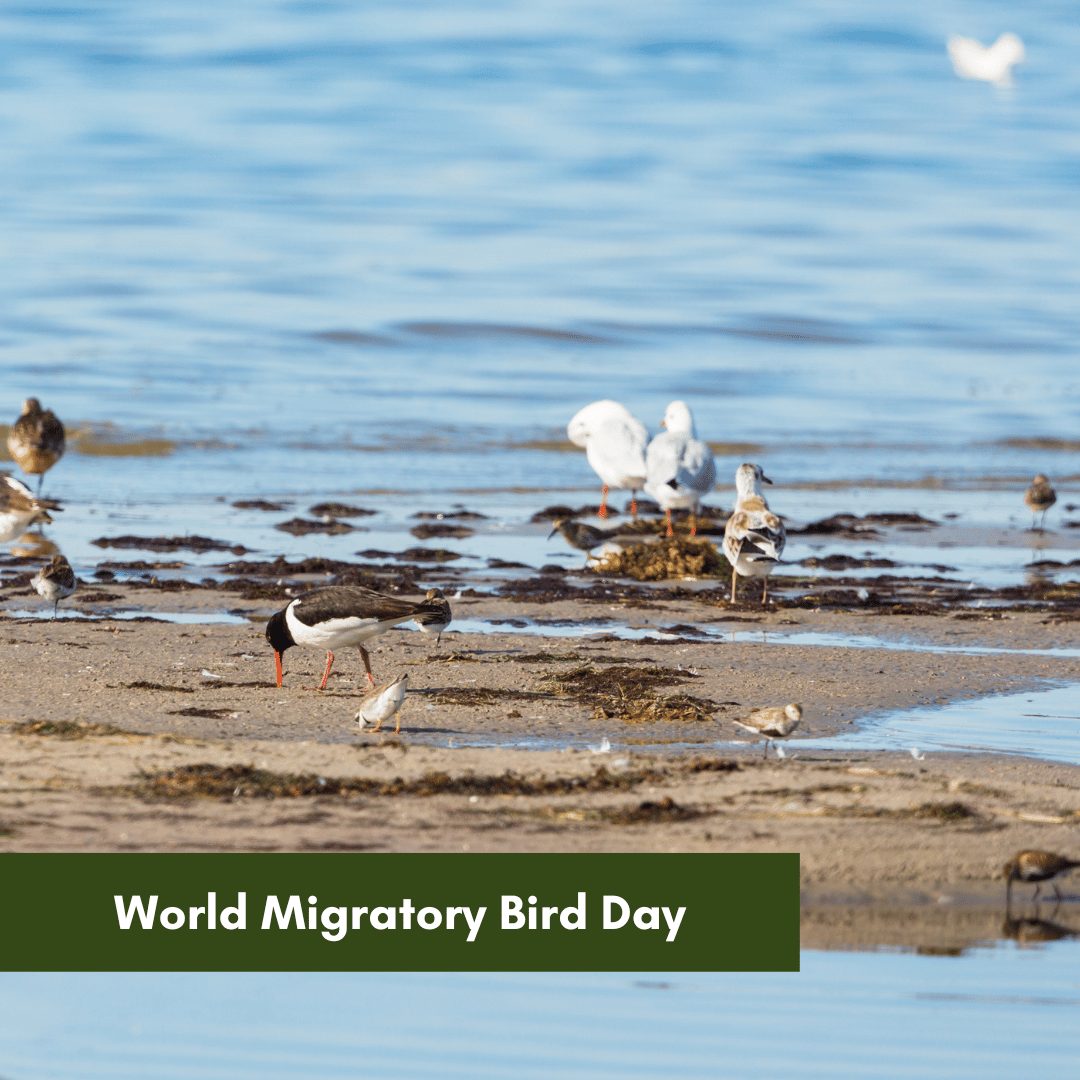
Saturday, May 13 is the first of two World Migratory Bird Days in 2023. These annual celebrations fall on the 2nd Saturday of May and October to mark the departure and return of migratory bird species, as they journey to their breeding grounds and back.
World Migratory Bird Day, supported by organisations such as the United Nations and EAAFP, is an international awareness-raising campaign to shine the light on the existence, significance and conservation of Migratory Birds and their habitat.
In the Southern Hemisphere, we recognise the May World Migratory Bird Day as a ‘farewell’ (and Bon voyage!) to our migratory waders, as they begin their arduous flight North to the Arctic Tundra.
Following the East Asian-Australiasian Flyway (EAAF) Shorebirds, such as the Critically Endangered Far-Eastern Curlew (Numenius madagascariensis), ‘hop aboard’ these flyways along with 36 other Australian Migratory Shorebird species.
An estimated 50 million birds utilise this flyway, relying upon healthy and productive wetland sites to stop, rest and forage along the way – typically in Eastern Asia – to top-up their energy reserves to complete their flight to the thawing breeding grounds in Northern Asia, Russia and Alaska.
This year’s World Migratory Bird Day campaign focuses on water.
Water is fundamental to us all and characterises the core habitat of Shorebirds, such as wetlands, inter-tidal zones, salt marsh and lakes.
Globally, not only are these habitat pieces facing encroachment from human development, they’re also subject to hydrological alterations, pollution and the effects of climate change (such as drying and the ‘wetland methane feedback’ process). All these pressures combined, these aquatic environments are becoming more fragmented and are seeing a decline in water quality – having great knock-on effects to the availability of foraging resources and the fauna that rely upon them.
The dual annual dates of World Migratory Bird Day (WMBD), mirror the cyclical nature of the birds and the seasons they follow – their return marked by the October WMBD.
Given these birds’ reliance upon such threatened aquatic habitats, migration is tragically ironic; This process that originated from their millennia of successful exploitation of an abundant resource niche, is now a perilous journey with dwindling supplies and places to stops along the way. Without safe, healthy habitat for these birds to prepare and rest, migratory birds may perish on their journey before they can successfully produce the next generation – a double-whammy for their population numbers.
The 2nd World Migratory Bird Day is on October 14 – when we welcome these waders back to Australian Shores to rest and recover in our wetlands for 6 months of the calendar year.
Before their return, what will you do to contribute to their conservation?
The Hunter Region Landcare Network, in conjunction with NPWS, is hosting a series of Shorebird Habitat Restoration events in May and June 2023.
Come along and learn more about this incredible group of birds, contribute to the conservation of their habitat in the Hunter Estuary and do your part in this patch of the East Asian Australasian Flyway. Think globally, act locally.
